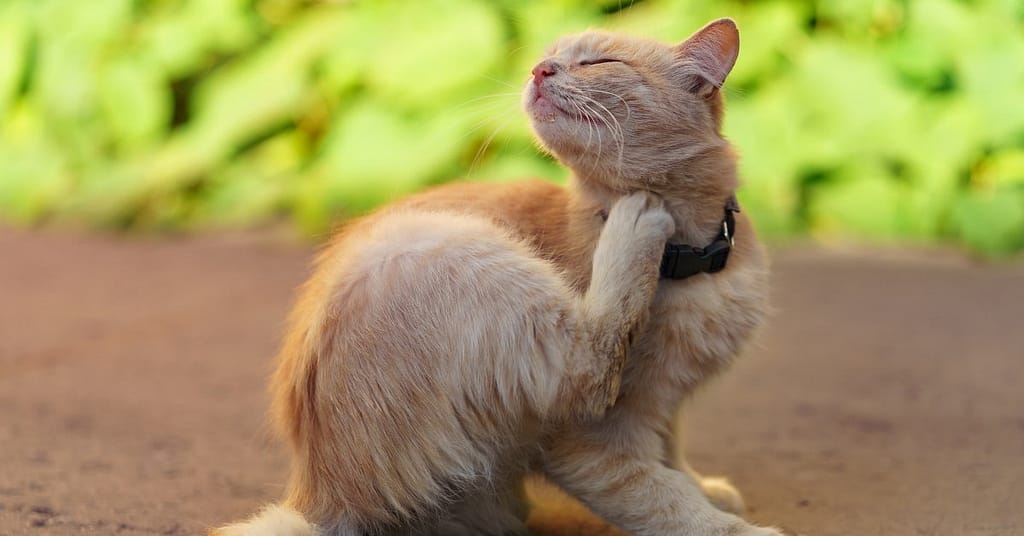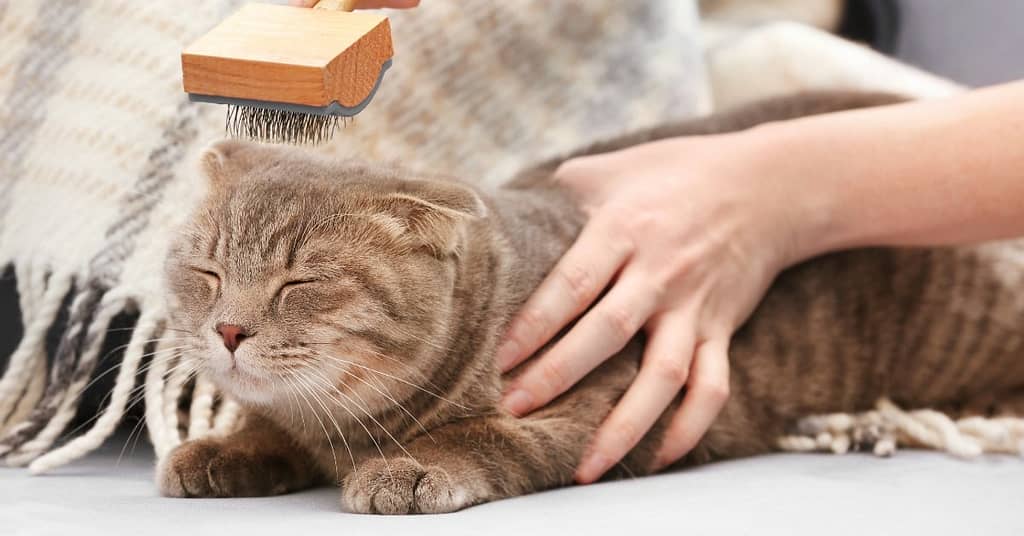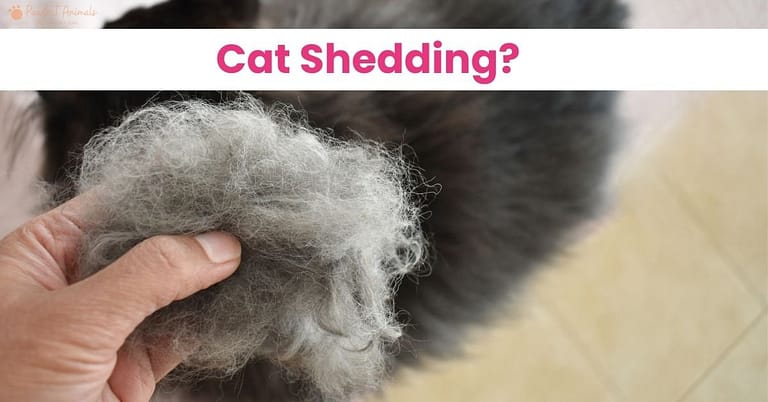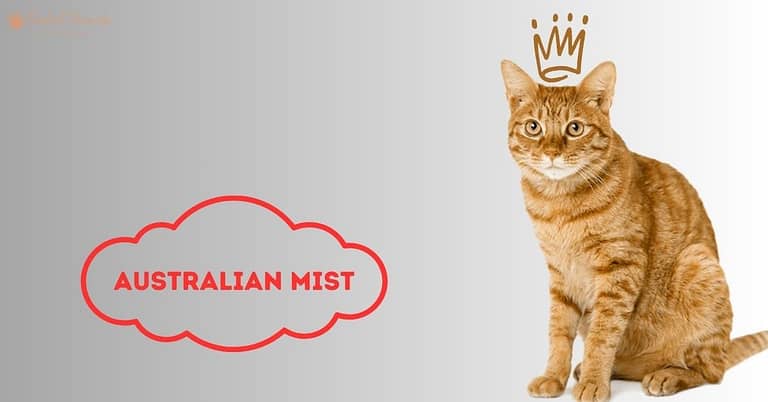Have you ever wondered, ‘Why does my cat have dandruff?’ If so, you are not alone, many cat owners are curious about this problem. Surely you would also like to know ‘How to get rid of cat dandruff?’ So don’t worry at all! You are absolutely at the right place. In this comprehensive guide, we’ll explore the root causes of cat dandruff, and provide you with effective solutions to keep your friend’s skin and coat healthy and dandruff-free.
What Is Cat Dandruff?
Cat Dandruff, scientifically known as “seborrhea,” is a condition in cats in which dead skin cells (called corneocytes) build up on their skin, hair follicles, or fur, commonly known as flakes. These flakes often appear as gray or white spots concentrated in specific areas on your cat’s fur. These flakes dry out the skin and sometimes cause skin irritation such as redness or scabs.

Minor cat dandruff is usually not a major cause for concern and can be controlled with proper treatment. But if the dandruff is excessive, it could mean that your cat has a more serious health problem.
What are the Symptoms of Cat Dandruff?
Following are the common symptoms of dandruff. These symptoms also indicate underlying skin problems. If your cat shows any of the following symptoms, contact your veterinarian so that appropriate treatment can be administered.
- Flaky Skin
- Itching and Scratching
- Dry, Scaly Skin
- Hair Loss
- Greasy or Oily Coat
- Skin Odor
- Skin Redness and Irritation
- Changes in Grooming Behavior
- Crusting
- Restlessness
Why Does My Cat Have Dandruff?
Your cat may have dandruff for the following reasons:
● Inadequate Grooming: Dandruff can occur if the cat is not grooming itself or if you are not brushing your cat regularly.
● Dry areas: In areas with low humidity or during the dry winter months, cats’ skin becomes dry, which can lead to dandruff.
● Allergies: Some cats are allergic to certain foods or certain things in the environment. Allergies such as pollen or dust are often a cause of dandruff in cats.
● Skin infections: Bacterial or fungal infections can cause dandruff.
● Parasites: Fleas, ticks, and mites, including ear mites and Demodex mites, can cause itchy and dry skin.

● Hormonal problems: Hyperthyroidism or Cushing’s disease can be a cause of dandruff.
● Seasonal changes: Some cats experience dandruff at certain times of the year. When he is finished, this condition ends.
● Poor diet: One of the causes of dryness can be a lack of fatty acids etc. in the diet.
● Underlying health conditions: Sometimes cats have other health conditions that make it difficult to groom themselves, such as kidney disease, arthritis, pancreatitis, or diabetes.
How to Diagnose Cat Dandruff at Home?
You can diagnose cat dandruff at home by following the methods below.
Visual Inspection
● See if you notice white flakes on your cat’s skin or fur.
● Check for dry, scaly patches or any redness or irritation.
● Observe if your cat is scratching a lot or seems uncomfortable. This could be a sign of dandruff-related issues.
Feel the skin
● Gently touch your cat’s skin, especially where you suspect dandruff.
● If the skin feels rough or scaly, it may be a problem area.
● Be on the lookout for any unusual lumps, bumps, or sores while feeling the skin.
Watch Behavior
● Pay attention to your cat’s behavior.
● If your cat is grooming excessively, scratching, or licking itself too much, it might indicate dandruff or skin discomfort.
● Also, notice if your cat seems more restless or distressed than usual.
How Do You Get Rid of Cat Dandruff?
You can use the following tips to get rid of cat dandruff. But remember, it is very important to know the cause of the dryness. If the dandruff does not improve with these methods, it may be due to another reason, so contact the vet as soon as possible.
● Good diet: Feed your cat good food with stuff like Omega-3 and Omega-6. These fatty acids help their skin and fur grow better. Consult your vet for further guidance on which food is best for your cat.
● Regular Grooming: Groom your cat’s fur regularly and use a soft brush. It makes your cat feel better. Plus, brushing also gets rid of flakes!

● Moisturizing Shampoo: Use special cat shampoo that makes their skin feel nice. But don’t wash them too much, just when needed, or it can make things worse.
● Humidify Your Home: Use a machine called a humidifier to make the air less dry in your home. This helps your cat’s skin not get all flaky.
● Supplements: Ask the vet if your cat needs special things like fish oil.
● Allergies: Consult a vet if your cat has any allergies. He can provide better guidance regarding your allergies.
When to Contact a Vet?
Getting rid of cat dandruff is not a difficult task. You can fix it at home with a good diet, brushing, and a few other tricks. But if your cat’s dandruff isn’t getting better, contact a vet. Because the cause of dryness can be something else. The doctor will help you get to the root of the dandruff. Once the cause is determined, they may prescribe certain medications to relieve your cat’s dryness. He may suggest a special shampoo or treatment for your cat’s skin. Also, the vet may change some of the ingredients in your cat’s diet. You should have regular check-ups with your cat’s vet to see if the dandruff is improving.
Is Cat Dandruff, Cat Dander, or Flea Dirt the Same thing?
Cat Dandruff, cat Dander, and Flea dirt are not the same things. All these are different from each other. Below is a detailed comparison between them.
| Characteristic | Cat Dandruff | Cat Dander | Flea Dirt |
| Source | Skin flakes | Skin particles | Flea excrement |
| Composition | Dead skin cells and oils | Tiny protein-based particles from cat’s skin and fur | Tiny black or dark specks of dried blood from fleas |
| Appearance | White flakes | Invisible particles | Tiny black/brown specks on fur |
| Cause | Dry skin, health issues | Shed skin cells and proteins | Presence of fleas on the cat |
| Health Implications | May indicate underlying issues | Generally, not a health concern | Sign of flea infestation |
| Transmission | Not contagious | Not contagious | Fleas can be transmitted between pets and humans |
| Treatment | Address dry skin grooming, diet | Typically, not treated separately | Requires flea control and environmental management |
In conclusion, treating cat dandruff is no big deal. This happens when the cat’s skin becomes dry and flaky. You can keep your cat safe from this if you feed your cat good food and take proper precautions. If these steps do not solve the problem, do not forget to visit a Vet for better treatment.


